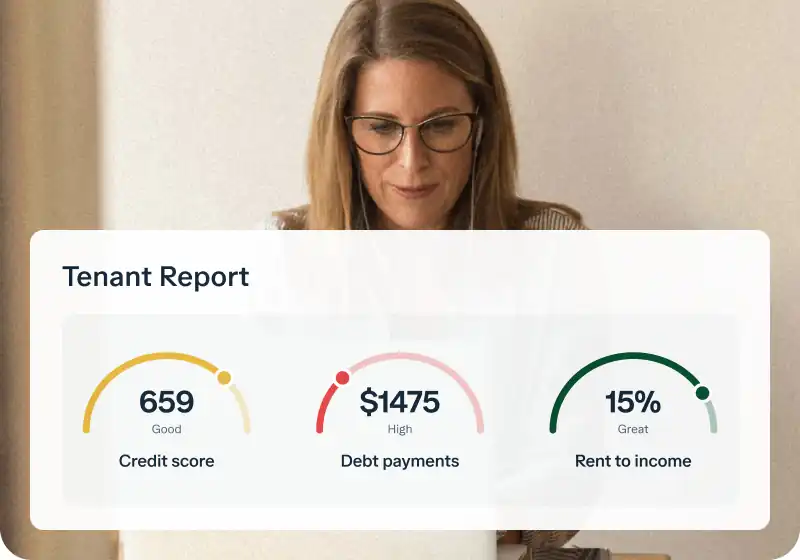Managing your business finances efficiently is crucial for growth and profitability, especially for landlords and real estate investors. Fragmented financial systems often lead to confusion, missed opportunities, and increased stress. Business bank accounts with multiple sub-accounts offer a powerful solution to streamline your financial organization.
This guide will explore how sub-accounts work, their numerous benefits, essential features to look for, and a comparison of top providers, preparing you for smarter financial management in 2025 and beyond.
Key takeaways
- Sub-accounts significantly enhance financial organization and simplify budgeting for businesses.
- They streamline tax preparation and improve overall cash flow management.
- Essential features include dedicated account numbers, competitive Annual Percentage Yield (APY), and robust automation.
- Baselane offers unlimited sub-accounts with dedicated numbers, ideally suited for real estate investors.
- Choosing the right sub-account solution requires a careful assessment of your business's unique financial needs.
What are business bank accounts with sub-accounts
A business bank account with sub-accounts is a specialized feature within a primary checking or savings account. This functionality allows you to easily segregate funds for various financial purposes.
Some providers offer "virtual buckets" or "envelopes," which are internal designations for funds within the main account balance. Other solutions provide "dedicated sub-accounts" that come with their own unique routing and account numbers, allowing for more formal separation and direct transactions.
This capability is increasingly important for modern businesses, enabling them to manage diverse income streams and expenses with greater precision. It helps avoid the complications of needing numerous separate physical bank accounts. Both types of sub-accounts simplify the complex task of financial management, making it more organized and less prone to error.
Why your business needs sub-accounts
Implementing sub-accounts can revolutionize how you manage your business finances. From simplifying tax season to gaining a clearer picture of your cash flow, the benefits are substantial. Let's explore the key advantages these specialized accounts offer.
Enhance financial organization and budgeting
Businesses often operate with multiple financial objectives, necessitating a clear separation of funds. While it is possible to have multiple bank accounts, managing several distinct accounts can be cumbersome. Sub-accounts within a single banking platform provide the necessary organization without the logistical challenges of numerous external accounts.
This streamlined approach facilitates clearer cash management and helps prevent overspending by ring-fencing funds for specific purposes. It is an effective way of achieving proper separating money in bank account for various operational needs. For property managers, this structure significantly streamlines their property management bank account structure.
Simplify tax preparation and fund allocation
One of the most significant advantages of sub-accounts is simplifying tax preparation. You can easily allocate funds for specific tax obligations, such as estimated self-employment taxes or sales tax liabilities. This proactive fund allocation ensures that money is always available when tax deadlines approach.
For landlords, sub-accounts are particularly useful for earmarking funds like HOA reserve funds or maintaining a dedicated property reserve for each asset. This organized approach reduces stress during tax season and simplifies year-end accounting procedures. It also makes generating accurate financial reports much more straightforward.
Improve cash flow management and savings goals
Sub-accounts provide real-time visibility into your allocated funds versus your available operating capital. This clear distinction supports more effective financial planning and forecasting for your business. You can precisely track how much money is designated for upcoming expenses, long-term investments, or emergency funds.
Setting up specific savings goals for business expansion or property upgrades becomes more concrete with dedicated sub-accounts. This disciplined approach fosters healthier cash flow and helps you stay on track with your financial objectives.
Manage multiple business ventures or rental properties
For real estate investors, sub-accounts are invaluable for segregating income and expenses by individual property. This allows you to accurately track the financial performance of each rental unit or distinct business entity within your portfolio. This clear separation is vital for understanding profitability and making informed investment decisions.
While some businesses choose to maintain a distinct bank account for rental property for each asset, sub-accounts offer a centralized yet separated solution. This simplifies oversight by keeping all related funds within one primary banking solution.
Enhance efficient payroll management
Businesses with employees can dedicate a specific sub-account solely for payroll. This ensures that funds are always available for employee compensation, preventing any shortfalls. It also streamlines the process of reconciling payroll deductions and taxes. Maintaining a separate payroll account simplifies compliance and reporting for employee-related expenses.
Financial clarity and control
Compartmentalizing funds into sub-accounts can enhance security by limiting the impact if a single account is compromised. This structure provides a precise understanding of your financial position across all segments of your business.
You gain granular control over where every dollar is allocated and spent. This heightened clarity empowers you to make more informed and strategic financial decisions, propelling your business forward.
What essential features should you look for
When evaluating business bank accounts with multiple sub-accounts, certain features stand out as essential for maximizing their utility. Understanding these can help you choose a solution that truly meets your organizational needs and supports your business growth.
Number of sub-accounts and dedicated account numbers
The ideal solution should offer enough sub-accounts to match your various financial segregation needs. Some providers offer unlimited virtual "envelopes," which provide internal organizational flexibility.
Other, more robust options, like Bluevine and Baselane, provide dedicated sub-accounts, each with its own unique routing and account number. A dedicated account number can be crucial for direct deposits, receiving payments, or setting up bill pay for specific funds.
Interest earning potential (APY)
Look for accounts that offer a competitive Annual Percentage Yield (APY) on all balances, including funds held within sub-accounts. Earning interest on your segregated funds, such as your property reserves or tax savings, can contribute to your overall returns.
For instance, Bluevine allows eligible customers to earn up to 3.7% APY on both main and sub-account balances, according to Bluevine.
Fee structures
Prioritize solutions that minimize or eliminate fees to maximize your retained earnings. Look for options with no monthly fees, transaction fees, or minimum balance requirements. These fee-free options help you avoid bank maintenance fees and ensure that more of your money stays within your business. Finding the best no fee checking accounts is crucial for cost-effective and efficient financial management.
Automation capabilities
Automation is key to unlocking the full potential of sub-accounts. Look for platforms that allow you to set up automated transfer rules to consistently fund each sub-account.
This feature ensures that money is automatically moved for taxes, payroll, or property reserves, reducing manual effort and potential oversight. Automated allocations streamline your budgeting and improve financial discipline.
Integrations with business tools
Seamless integration with your existing business tools, such as accounting software like QuickBooks or Xero, is vital. Compatibility with payroll services further automates financial workflows, reducing manual data entry and potential errors. A comprehensive solution that integrates with your tech stack simplifies bookkeeping and reporting significantly.
Ease of use and digital banking experience
A user-friendly online platform and intuitive mobile app are essential for convenient management of your sub-accounts. The digital adoption of banking solutions, including sub-account features, has accelerated significantly from 2020-2025.
Banks are aiming to be comprehensive digital partners, reflecting growing customer demand for more customized and flexible account structures. This means the overall digital experience should be smooth and efficient.
Choosing the right sub-account solution for your business
Selecting the best bank account with sub-account capabilities depends heavily on your specific business type and financial needs. Consider your transaction volume, growth trajectory, and whether you require unique account numbers for each segregated fund. Real estate investors, for example, have very specific needs for property-level accounting and expense tracking.
You should carefully assess whether a solution offering virtual "buckets" or dedicated sub-accounts with unique account numbers aligns best with your operational requirements. Think about how many different categories of funds you need to manage and how you prefer to access and spend from them. Understanding whether is it bad to have multiple bank accounts will help you choose between a consolidated solution or maintaining completely separate accounts for distinct entities. When deciding, consider how to pick a bank that provides the most relevant features for your unique business model.
How to maximize your sub-account strategy
Once you've chosen a business bank account with sub-accounts, implementing an effective strategy is key to realizing its full potential. A systematic approach ensures you leverage these tools for maximum financial clarity and control.
Clearly define the purpose for each sub-account before you begin to set up multiple bank accounts. This might include distinct accounts for operating expenses, tax liabilities, security deposits, or future investment capital. For landlords, this means setting up separate accounts for each property's income and dedicated repair budgets.
Implement automated transfers to consistently fund each sub-account according to your budget. This ensures money is allocated proactively, reducing the need for manual intervention. Regularly review your sub-account balances to ensure proper allocation and adjust as needed to reflect changing financial priorities or unexpected expenses.
For LLCs, opening an open LLC business account with integrated sub-account capabilities can significantly enhance liability protection and financial clarity.
Bottomline
Business bank accounts with multiple sub-accounts are more than just a convenience; they are indispensable tools for modern financial management. They empower you to gain unprecedented clarity into your cash flow, streamline your operations, and prepare strategically for future growth. By segmenting your funds, you transform complex business finances into a clear, actionable system, reducing stress and boosting efficiency.
Baselane Banking offers real estate investors a specialized solution to simplify their financial workflows and maximize their portfolio's potential. Its unlimited dedicated accounts are perfect for managing multiple properties with precision.
Take control of your finances today by exploring solutions like a free online business checking account that offers powerful sub-account features, paving the way for organized and profitable operations in 2025 and beyond.
FAQs
What is a business bank account with sub-accounts?
A business bank account with sub-accounts allows you to segment funds for different purposes within a single primary account. These can be virtual "buckets" or dedicated accounts with unique numbers, simplifying budgeting and financial organization. They help businesses manage various income streams and expenses effectively.
Why are sub-accounts beneficial for real estate investors?
Sub-accounts enable real estate investors to easily separate funds for each property, including income, expenses, and reserves. This streamlines bookkeeping, simplifies tax preparation, and provides clear insights into the profitability of individual units. This organization can save significant time and effort.
Do all sub-accounts have unique account numbers?
No, not all sub-accounts come with unique account numbers. Some providers offer virtual "envelopes" or "buckets" for internal organization, which do not have separate numbers. Other solutions, like Bluevine and Baselane, provide sub-accounts with distinct routing and account numbers for more formal segregation and direct transactions.
Can sub-accounts help with tax preparation?
Yes, sub-accounts significantly aid tax preparation by allowing you to pre-allocate funds for taxes and categorize expenses by purpose. This organized approach provides clear records, reduces year-end stress, and makes generating necessary financial reports, such as Schedule E, much simpler.
How do I choose the best bank account with sub-accounts?
Consider your business type, the number of sub-accounts you need, whether unique account numbers are essential, and the fee structure. Look for competitive APY, robust automation features, and seamless integrations with your existing business tools to find the solution that best fits your financial management style.

















